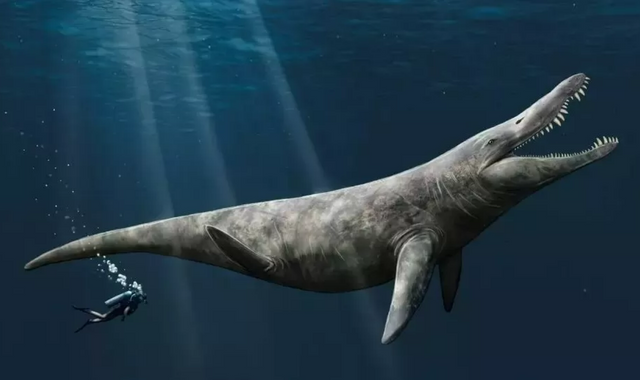Bones of Jurassic pliosaur found in museum drawer reveal creature twice the size of killer whale that swam in seas over Oxfordshire

A chance discovery of four enormous bones in a museum drawer has shone light on a creature that swam in the seas that covered Oxfordshire 150 million years ago.
The remains of the pliosaurus were unearthed at Abingdon County Hall Museum by Professor David Martill.
The University of Portsmouth professor was looking through a drawer of fossils when he chanced on a large vertebra - and he was "thrilled" to find there were three more in storage.
Scans of the fossilised vertebrae revealed the marine reptile could have grown to 14.4m long - twice the size of a killer whale.
Professor Martill described the pliosaurs as "very fearsome animals".
"They had a massive skull with huge protruding teeth like daggers - as big, if not bigger than a T-rex, and certainly more powerful."
Pliosaurs were like plesiosaurs, but with a bigger elongated head, similar to a crocodile, and a shorter neck.
They had four flippers, which acted as powerful paddles to propel them through water and a relatively short tail.
Professor Martill got into palaeontological hot water more than 20 years ago, when he suggested on the BBC's Walking with Dinosaurs series that a similar special, liopleurodon, could grow to 25m.
The agreed estimate was then revised down to 6m.
"The size estimate on the BBC back in 1999 was overdone, but now we have some evidence that is much more reliable after a serendipitous discovery of four enormous vertebrae," he said.
"It wouldn't surprise me if one day we find some clear evidence that this monstrous species was even bigger."
The vertebrae were originally discovered during temporary excavations at Warren Farm in the River Thames Valley in Oxfordshire.
The study detailing the findings was published in The Proceedings of the Geologists' Association.


